Science. My archnemesis. Since time memorial, I’ve never been the kind of kid who’d like to ask why things work. I just like to know how to work them. So that goes without saying, my chemistry test scores were always acidic, math drove me mad, and physics was my equivalent of an academic nuclear meltdown. Perpetually. Throughout secondary school, that subject had always been exam poison.
Hence, with my distaste for all things Einstein, the Science Centre for me is like Superman’s love for kryptonite. I remember going there once for a school excursion and haven’t been back ever since. That is until last Saturday (19 Mar 11) when I decided to go back for a visit. It could have easily been more than 20 years since I stepped foot in our national monument of science inaugarated in 1977.
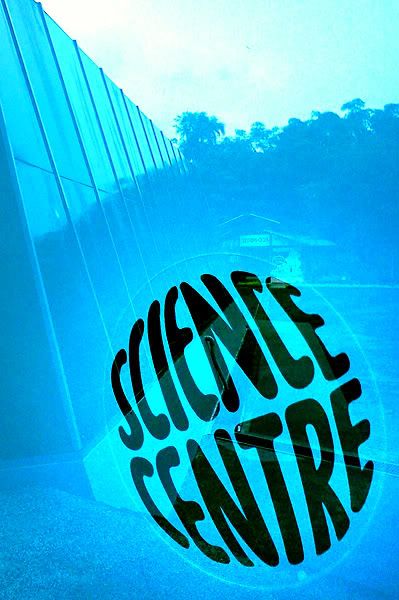
Getting behind the science of our natural environment, built environment & ultimately, the universe both beyond & within. Located at Jurong East, the centre is open from 10 am to 6 pm, Tuesday to Sunday. Admission charge is S$9.00 for adult & S$5.00 for child. Refer to SCS website for more info.
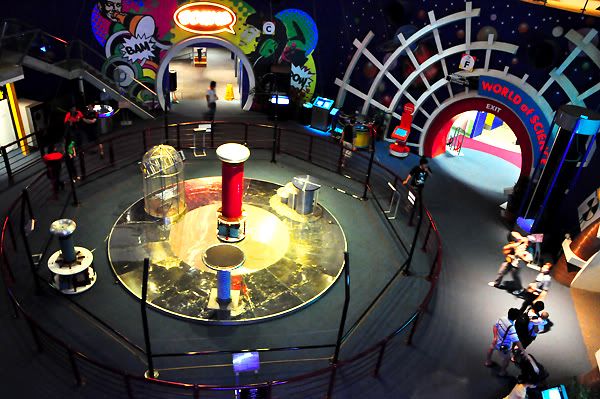
SCS today is very different from my memory of it. There are currently more than 20 permanent & temporary exhibitions going on which I would classify into 3 broad categories - environmental, biological, & technological. The categories are not merely exclusive, but cross-pollinate as well. The exhibits are distributed across several zones with the circular foyer where the Tesla Coil is located acting as the main intersection for all zones.

Of the collection of mind-boggling exhibits in the foyer, my favourite was the simple but mesmerising Icy Bodies. It is basically small pieces of dry ice skimming across a sheet of water. As dry ice touches water at room temperature, it dissolves with a fanfare of mist forming patterns that are both captivating and unique. If this is on a screensaver, I could watch it all day!
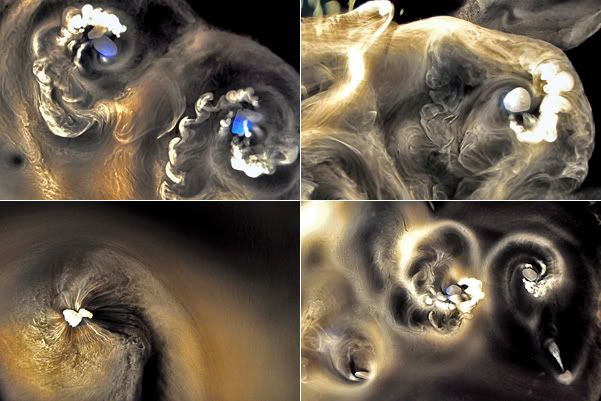
The fog trails are reminiscent of gaseous fields created by celestial bodies, especially comets, in outer space. I love photographing it! Perhaps someone could develop an app where users can 'drop' small pieces of dry ice onto a 'surface of water' & just watch the resulting mist patterns? Very therapeutic!
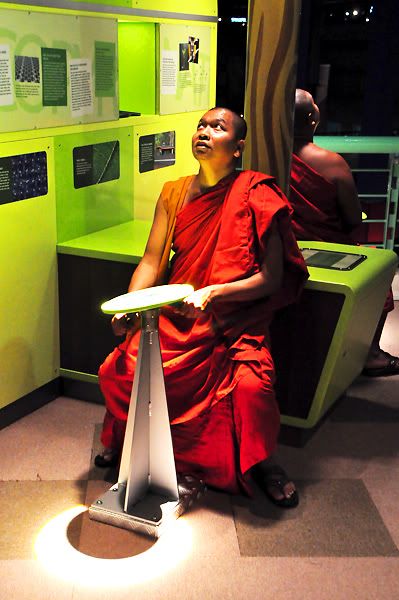
Science & religion fascinating each other. Is the monk searching for the 37 levels of heaven in the celestial impressions from the photos above?
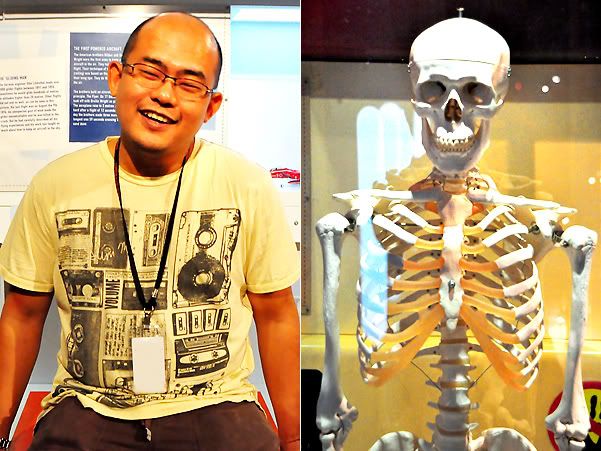
From what affects us on the outside, to what goes on inside each of us... the exhibits on nature & human biology helped me appreciate alot more about the environmental & medical issues on a deeper level. Do you know that there are about 70 trillion cells in our body & that 50% of Asians are genetically not programmed with the ALDH enzyme (which metabolises alcohol) thereby causing the red flushing effect? Fascinating! And it seems like the guy pictured here has discovered the science of happiness.
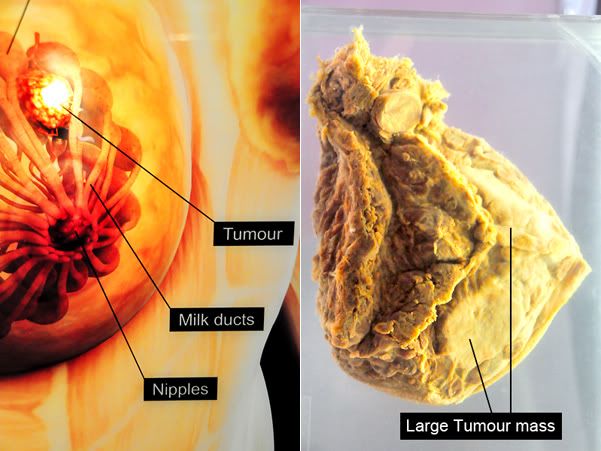
A temporary exhibit at the Genome zone showcased all there is to know about breast cancer. Both men & women have the same breast tissues but estrogen in females plumped them up for the purpose of milk production. So guys can contract breast cancer too! In Singapore, and I believe elsewhere, women between the ages of 40 - 50 years old are at the highest risk of developing this highly treatable cancer if detected early. So ladies, remember to do BSE (breast self-examination) regularly. I'm sure your husband, boyfriend or partner would gladly help. Treat it as foreplay!
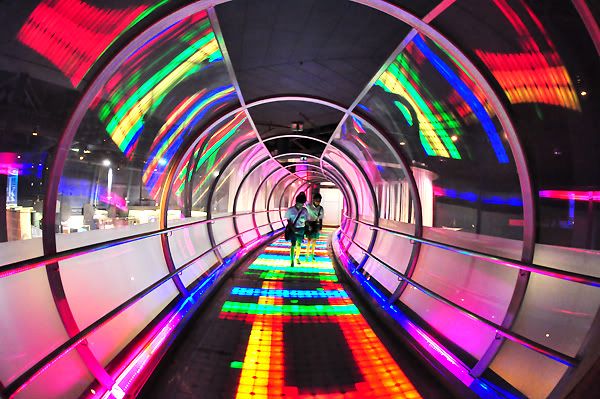
Moving from the biological exhibits, I crossed over to the crucible of technology. I had the perception that science centres are more for children. But I was pleasantly surprised. The depth of information and creative exhibitory techniques made the SCS a knowledge playground for adults & kids alike. When you are at SCS, don't miss taking photos at this psychedelic tunnel located on level 2 of the iSpace zone. The lights are triggered by motion.
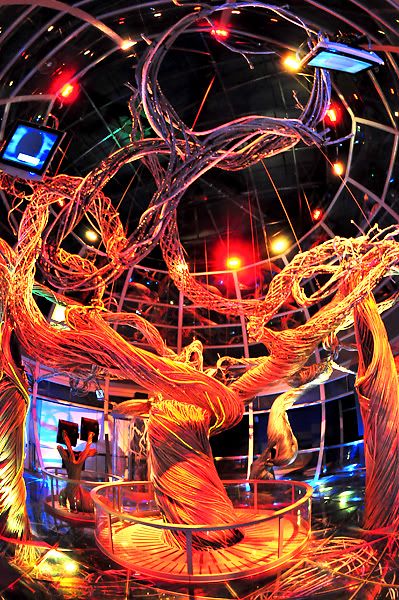
At the end of the tunnel, you'll come to this dome that houses a huge tree made of wires. Somewhat like Avatar's Tree of Life gone cyber. This artistic installation presents a vision of the future but I find it to be the most polished of all the exhibits I've seen.
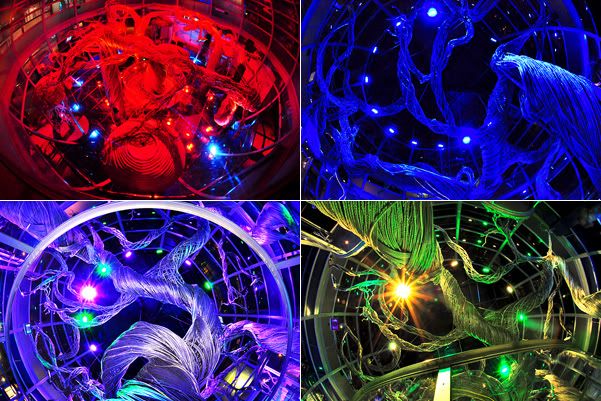
Build a bar next to this tree & it will be great as a discotheque! What a perfect club ambience for trance with all the bewitching lights!

A hand in the future for replaceable body parts? If only SCS has the budget to bring in a life-sized cyborg instead of just a hand, the Robotics zone would be so much more exciting. Imagine if Roxxxy, the world's first sex robot, was featured here... the centre sure see high traffic from all-boys' schools! Maybe can program Roxxxy to teach sex ed.
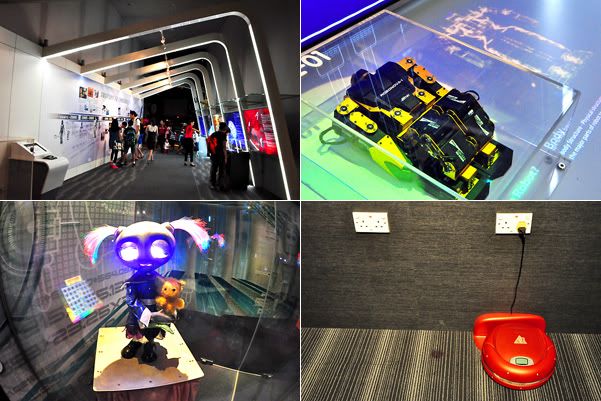
It's a real pity the Robotics section didn't bank on more fanciful exhibitory techniques to introduce the topic. I feel there's a lot of potential for exhibits here to wow rather than the current displays that seem to have been taken from a junkyard. The most laughable was the Electrolux Trilobite vacuum cleaner. From the entrance of the gallery, there was a progressive build up of expectations about the future of robotics in realising A.I. humanoids only to be shown a vacuum cleaner at the end of the journey. And the bugger was 'sleeping'. With the unsightly wall sockets exposed.

At the heart of Science Centre Singapore is the Tesla Coil which was invented by Nikola Tesla around 1891 for a variety of experiments involving electricity such as transmitting electrical power without wires. That may be a reality in the future but for now, the invention is mostly used for Hollywood effects.

There are a couple of shows daily in SCS and you can check their schedule at the foyer. I missed the fire tornado showtime at 3 pm, but managed to catch the 5 pm Tesla Coil display. In this segment of the show, the 2 balloons above were zapped. One of the balloons contains helium while the other is filled with hydrogen. The one with hydrogen exploded. It's quite spectacular & the best place to stand for photos is near the entrance to Hall F.
There were still a lot more exhibits that I didn’t get to see but whatever I managed to cover was enough to make my grey matter a lot denser (since I’m an airhead to begin with). I think the SCS is definitely worth a visit even though the look-and-feel of the whole place felt like patchwork and some of the interactive exhibits weren’t working. But every inch of that place is covered by something about something so the dazzle of knowledge really make up for the misgivings.
But SCS is not about making geeks out of every one of us. I was amused by the outdoor water playground that was a huge draw for the kids. I saw parents who brought their kids there just for the themed water park which is an extension of the exhibit on the water situation in Singapore.
When the mind never ceases to wonder, it will always be fascinated. I had such a good time there, I stayed the whole day although my initial plan was just to stay a couple of hours. It took me more than 20 years to come back here again. Let’s just hope my next visit won’t be me with a walking stick. Or perhaps they have invested robotic legs by then? Hmm… let science answer the imagination of man.
For more photos, please click here.











